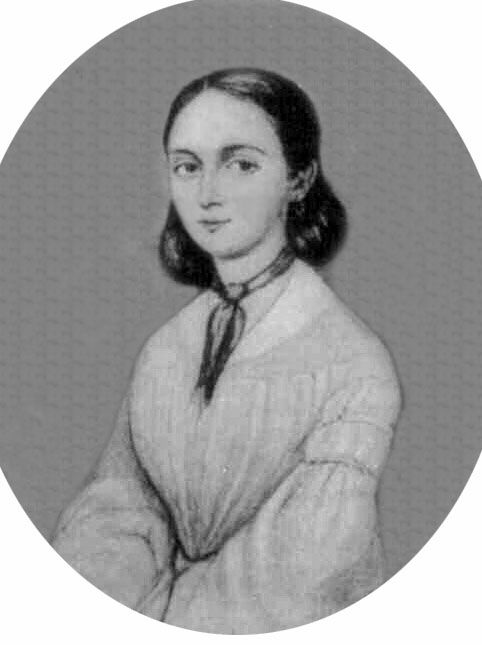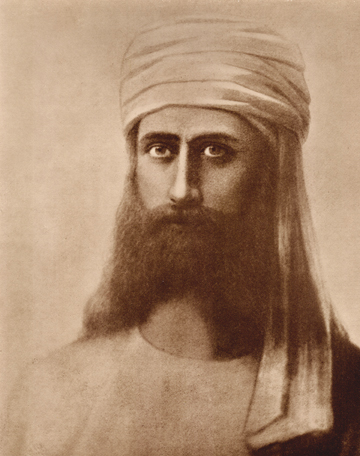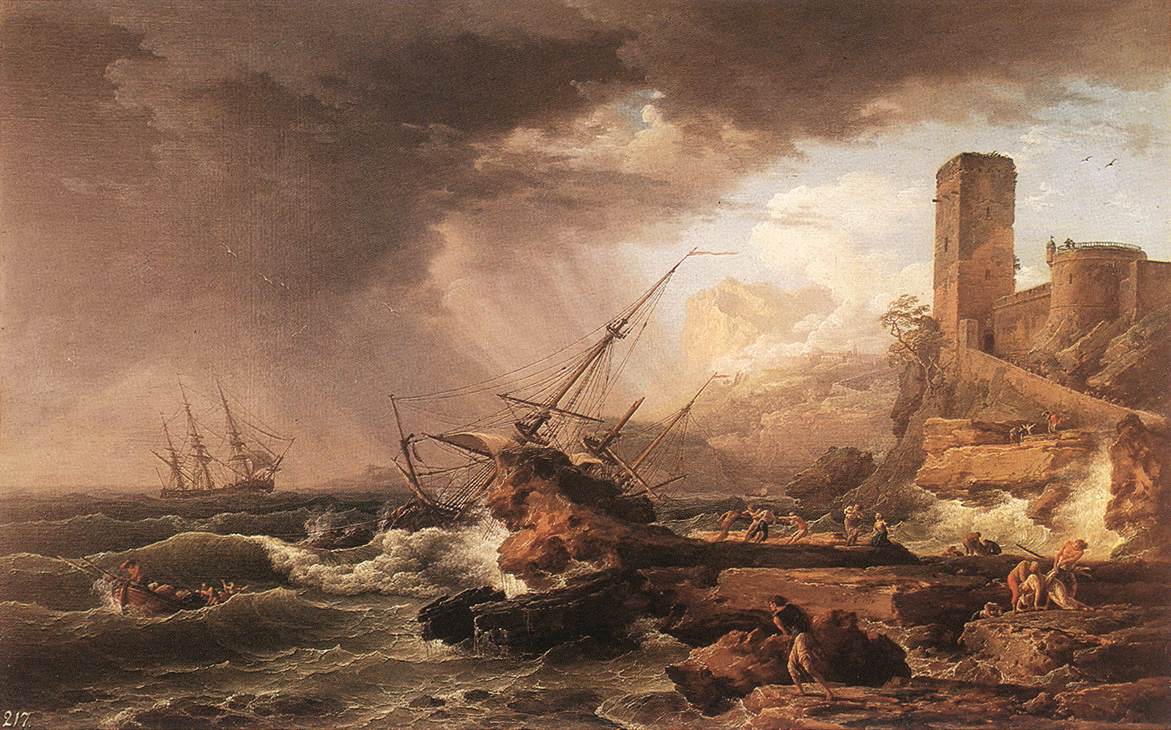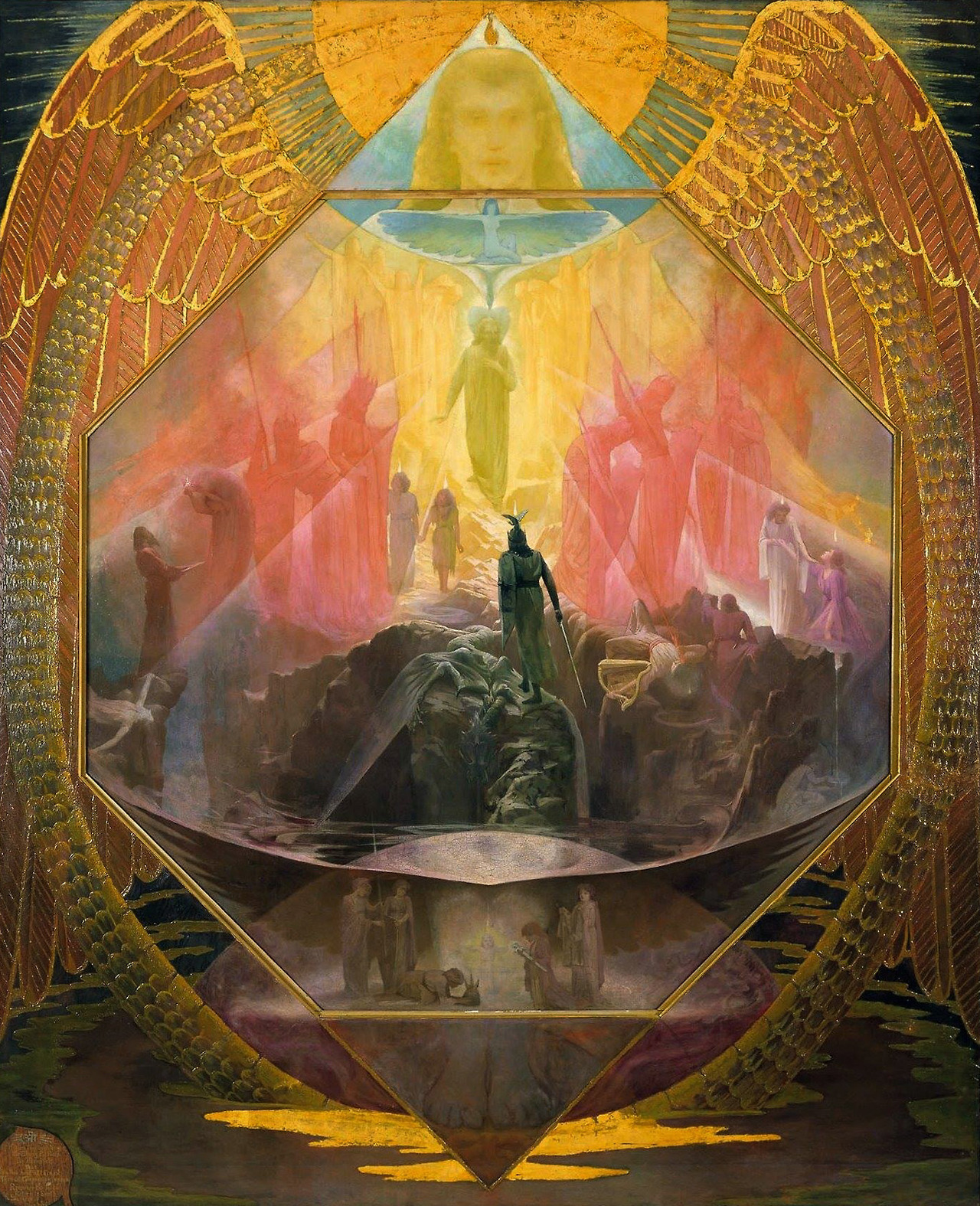
Masonic Stories
Who was Helena Blavatsky?
Helena Blavatsky had a profound impact upon the world, but who was she and where did she come from?
Helena Petrovna Blavatsky was born Helena Petrovna von Hahn, on August 12, 1831 into a military family in the Ukrainian town of Yekaterinoslav, which was then part of the Russian Empire under the Romanov Dynasty.

Her childhood was an unusual one for her time. Her grandmother was Princess Helena Pavlovna Dolgorukov, a linguist, botanist, and woman of science who took an interest in the education of Blavatsky, imparting her love of knowledge and philosophy to the young girl. Her great-grandfather, Prince Pavel Vasilyievich Dolgorukov, was a major general during the reign of Catherine the Great. He was both a Mystic and a Freemason having been a member of the Rite of Strict Observance in Russia. This Rite, founded in Germany in the 1750s by Baron Karl Gottlieb von Hund, was organized around the Order’s belief in and obedience to certain “Unknown Superiors” - mysterious figures who were secretly directing the events of the 18th century.
It was in her great-grandfather’s home that Helena Blavatsky grew up and it would be in his library that she spent much time reading and learning.
“[He] had a strange library containing of hundreds of books on alchemy, magic, and other occult sciences. I read them with keenest interest before the age of fifteen…soon neither Paracelsus, Kunrath, nor C. Agrippa would have anything to teach me.”
She was exposed to a host of esoteric subjects such as Mythology, Gnosticism, Rosicrucianism, Astrology, Theurgy, and many other occult subjects.
In fact, it was in this same library that she supposedly discovered a manuscript containing the exploits and prophecies of the enigmatic Count of Saint-Germain. This discovery and her great-grandfather’s connection to the “Unknown Superiors” no doubt inflamed her imagination of mysterious adepts directing the occult undercurrents of the world. But who were these Masters and Adepts who were seeking the perfection of Humanity? Where were they and what knowledge did they possess? Her thirst for answers to these early questions would cause her to search for the rest of her life for the “Masters of the Ancient Wisdom.” It can be speculated that her interaction with the Freemasonry of her great-grandfather was one of the first clues in her quest.
Blavatsky’s early education was typical of a girl of her rank and fortune. She was prepared for the role of a noble wife whose destiny included a life spent in drawing rooms, afternoon recitals, and dinner banquets. She was groomed to be an entertaining companion and lovely accent to the already vast accolades of an accomplished gentleman. This was the fate of a young woman of her stature.
In 1849, at the tender age of seventeen, Helena Petrovna von Hahn was betrothed to Nikifor Vladimirovich Blavatsky, the vice Governor of the province of Erivan, who was more than twenty years her senior. Yet, as soon as the marriage came into being, she awakened to a suffocating realization: she was never meant for the traditional role of a high society wife.
After three months Blavatsky was so unhappy with marriage that she demanded that her husband release her. He acquiesced and sent his wife, alongside an armed escort, to Crimea and back to her family. Overpowered by her desire for adventure, she fled her traveling companions, bribed a ship’s captain, and traveled by sea to Constantinople pursuing the footsteps of the ancient explorers she had read about in her youth. From Constantinople, Blavatsky made her way to Cairo, where she fortuitously encountered Brother Albert Rawson.
A renowned American Freemason and esotericist, Rawson had a similar inclination towards the occult as Blavatsky. Not only was he member of the Free Thought Society, but he was one of the founders of the Order of the Nobles of the Mystic Shrine. Throughout her life, Blavatsky would surround herself with prominent members of the Masonic intellectual and mystical elite such as Brother Rawson.
Together they traveled and explored the exotic places of Old Egypt and eventually discovered the Coptic magician Paulos Metamon. Some believe that this occultist was none other than Master Serapis, who communicated to them the ways of Egyptian Esotericism.
“Ah! There was the key to the occult mysteries of old Cairo. The chief – the shayk of the magicians – had discovered the secret of the Philosopher’s stone that turned things into gold. He was enriched by us, and we were enlightened…”

From Cairo, Blavatsky traveled throughout the Middle East with Brother Rawson, seeking out occultists, Freemasons, and magicians to broaden her esoteric knowledge. Once she had learned all she could, she set her sights on Europe to continue her search for Truth. It was in London in 1851, that she had her first encounter with “Master Morya,” a mysterious figure who would serve as Blavatsky’s spiritual mentor and master for the rest of her life.
From London, Blavatsky traveled to America on her way to Asia, exploring the vast countryside and investigating the spiritual practices of the Native Americans. After reaching California she set sail for India, where she attempted to enter Tibet for the first time, following instructions in a letter from Master Morya. She was unfortunately intercepted at the border by the British Army and denied entry to the mysterious kingdom.
Returning west in 1856 after this failure, Blavatsky was shipwrecked off the Cape of Good Hope, one of two shipwrecks she would miraculously survive during her travels. Upon her return to the United States, she again connected with Brother Rawson, who gave her a much grander tour of the United States than her previous visit, showing her various Masonic Temples and sites of occult interest.
Afterwards she returned to Russia for several years, finally making her way to Italy where she met the charismatic Brother Guiseppi Mazzini, a prominent Freemason, and the Grand Master of the Grand Orient of Italy. They quickly grew close to one another, sharing a profound understanding of the deeply esoteric origins of Freemasonry. It was among the disciples of Mazzini that Blavatsky most likely met Brother Charles Sotheran, another American Freemason, and the Assistant Grand Secretary-General of the Southern Jurisdictions of the Scottish Rite – a gentleman that would be play a key role at the founding of the Blavatsky’s Theosophical Society. Many were called to the idealism and desire of Brother Mazzini to spread the Masonic ideals of Freedom and Equality throughout the world, and it was during the War of Italian Unification that Blavatsky was wounded while assisting Brother Mazzini's forces at the Battle of Mentana, a brutal but heroic loss for the forces attempting to forge the nation of Italy.
After her wounding on the battlefield, Blavatsky received another letter from Master Morya, summoning her again to Tibet. She traveled overland, entering the mysterious land of Tibet in 1868, though the facts of this journey are unknown to history. It was in the high Himalayas that she finally found the Brotherhood of the Great White Lodge – the Masters of Wisdom and Unknown Superior of her youth. At the feet of her Masters she learned the ancient language of Senzar and was given access the most ancient of all texts; the Stanzas of Dzyan. It is this ancient philosophy that would be the basis of her magnus opus - the Secret Doctrine.

Leaving Tibet with a mission from the “Masters of the Wisdom” to share the knowledge of the East with the societies of the West, she was nearly killed in an explosive shipwreck off the coast of Egypt. Of the 400 passengers on the S.S. Eumonia, she was one of only 16 survivors. As she was unable to swim, Blavatsky would later explain the mystery surrounding her improbable rescue by saying that she was pulled from the water by a strong, unknown individual who she never saw again.
After reaching New York City, Blavatsky connected with a reporter named Henry Steel Olcott who would join her as a lifelong companion. Together with Brother Charles Sotheran, and an Irish Occultist named William Quan Judge, they founded the Theosophical Society on November 17th, 1875, a name that was suggested by Brother Sotheran.
Initially, Blavatsky wanted to form the society as a ritualistic and occult center based on the ancient model of Freemasonry. She believed that the Craft was a survival of the Ancient Mystery Schools and that by fusing the Western Esoteric Tradition of Freemasonry with Eastern Mysticism, the true Universal Religion of the Atlanteans would emerge to guide the world to understanding and peace.
Henry Olcott wrote:
“On the 17th of April we began to talk with Sotheran, General T., and one or two other high Masons about constituting our Society into a Masonic body with a Ritual and Degrees; the idea being that it would form a natural complement to the higher degrees of the Craft, restoring to it the vital element of Oriental mysticism which it lacked or had lost. At the same time, such an arrangement would give strength and permanency to the Society, by allying it to the ancient Brotherhood whose lodges are established throughout the whole world. Now that I come to look back at it, we were in reality but planning to repeat the work of Cagliostro, whose Egyptian Lodge was in his days so powerful a center for the propagation of Eastern occult thought.”
But the Society had already attracted many members outside the circle of Freemasonry and the idea of a Co-Masonic Order based on the ideas of the Ancient Wisdom died. Nevertheless, the emerging Theosophical Society became the perfect vehicle for Blavatsky to disseminate the esoteric information she had gathered from both the East and West. For her and for all Theosophists there was no religion higher than the Truth. Although hampered by her decision not to found the Theosophical Society as a Freemasonic order, her and circle of disciples began to spread the Light of Theosophy.
An initiate and disciple of numerous occult practices and traditions, Blavatsky was also made a Brother of the Adoptive Rite of Freemasonry. In 1877, Sovereign Grand Master John Yarker, a prominent Freemason and Occultist of the time, conferred upon Blavatsky the degrees of the Ancient and Primitive Rite of Masonry.
Blavatsky’s Masonic Diploma, dated the 24th of November 1877, reads:
“We, the Thrice-Illustrious Sovereign Grand Master Generals… do declare and proclaim our illustrious and enlightened Brother, H. P. Blavatsky, to be an Apprentice, Companion, Perfect Mistress, Sublime Elect Scotch Lady, Grand Elect, Chevalière de Rose Croix, Adonaite Mistress, Perfect Venerable Mistress, and a crowned Princess of the Rite of Adoption.”
These degrees of the Rite of Adoption were created specifically for women to study and unveil the mysteries of Scottish Rite Freemasonry. Between her travels, her studies, access to her great-grandfather’s library, and her close friendships with many prominent Masons, Blavatsky probably knew more of the Craft even prior to receiving these degrees than most Masons of her day
As the years passed on and Blavatsky’s life was coming to an end, she focused her energy in the finalization of the The Secret Doctrine and the Voice of the Silence. In 1890, a year before her death, she met Annie Besant who had begun writing a literary review of The Secret Doctrine. This meeting formed the next link in the Theosophical chain as Besant would take over the leadership of the society soon after Blavatsky’s death, supervising a period of unprecedented expansion.
It would be Besant who would continue the work of Blavatsky creating a Freemasonry that joined the ideas of the West with those of the East. The new head of the Theosophical Society became not only a Freemason, but the Most Puissant Grand Commander of the British Federation of Le Droit Humain – the precursor of Universal Co-Masonry. She would spread Co-Masonry throughout the world, infusing spirituality and esotericism into this restoration of the true mysteries of Freemasonry. Perhaps she did this in hopes of fulfilling the dreams of Blavatsky and honoring the life and example of her mentor.
Blavatsky died in 1891 in Besant’s house in London but her immortal words remain with us to this day guiding us ever onward towards the Perfection of Humanity.
“There is a road, steep and thorny, beset with perils of every kind, but yet a road, and it leads to the very heart of the Universe: I can tell you how to find those who will show you the secret gateway that opens inward only, and closes fast behind the neophyte for evermore.”

